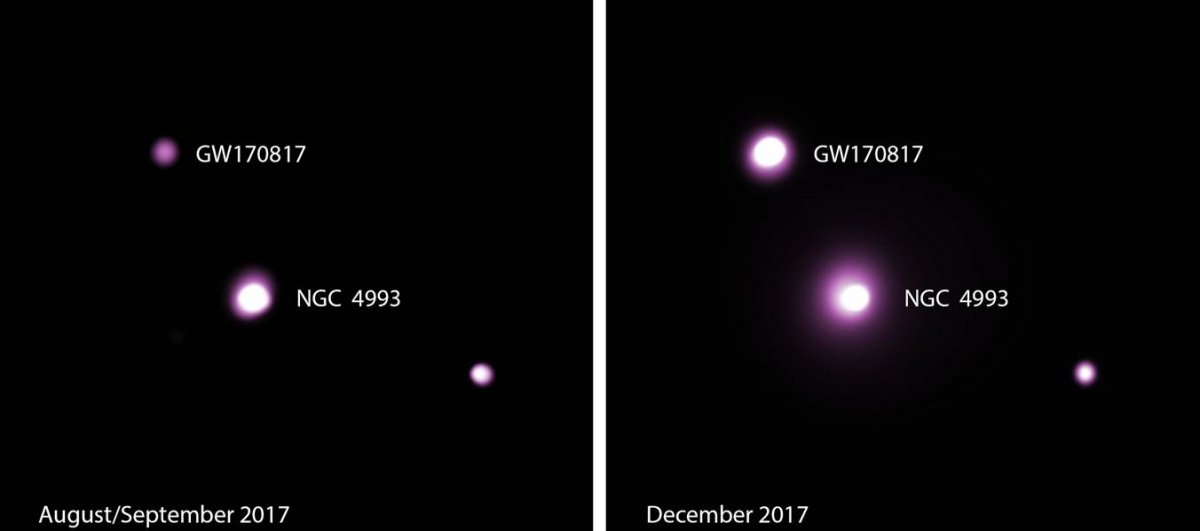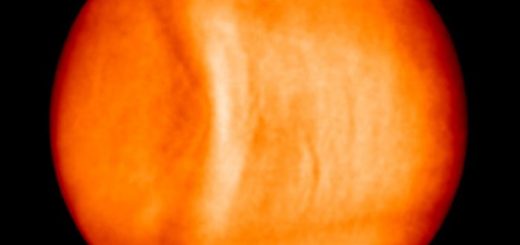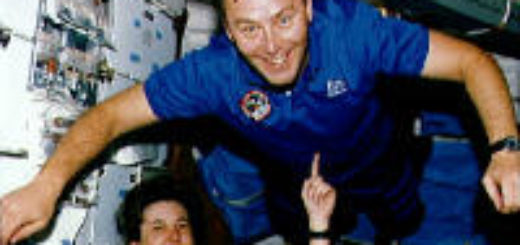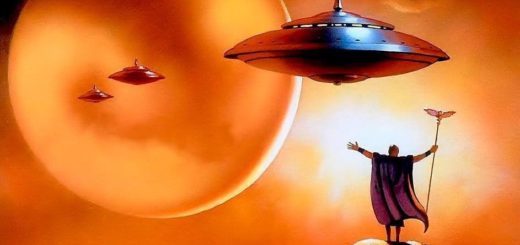Neutron-Star Merger Puzzle: Afterglow Continues To Brighten
Astronomers are still focused on the collision of the two collapsed star cores that took place about 138 million light-years away and sent gravitational waves rippling through the universe.
The afterglow of the neutron star has steadily brightened in recent months, and for now researchers don’t have a concrete explanation for the change.
“Usually when we see a short gamma-ray burst, the jet emission generated gets bright for a short time as it smashes into the surrounding medium – then fades as the system stops injecting energy into the outflow,” said astrophysicist Daryl Haggard at McGill University, in a press release.
“This one is different; it’s definitely not a simple, plain-Jane narrow jet.”
New observations from NASA’s orbiting Chandra X-ray Observatory, reported in Astrophysical Journal Letters, indicate that the gamma ray burst unleashed by the collision is more complex than scientists initially imagined.
One theory of the phenomenon could be that the merger launched a jet that shock-heated the surrounding gaseous debris, creating a hot ‘cocoon’ around the jet that has glowed in X-rays and radio light for many months.

Neutron-star merger yields new puzzle for astrophysicists. Image: McGill University
The new data could be explained using more complicated models for the remnants of the neutron star merger. One possibility:
The X-ray observations jibe with radio-wave data reported last month by another team of scientists, which found that those emissions from the collision also continued to brighten over time.
While radio telescopes were able to monitor the afterglow throughout the fall, X-ray and optical observatories were unable to watch it for around three months, because that point in the sky was too close to the Sun during that period.
“When the source emerged from that blind spot in the sky in early December, our Chandra team jumped at the chance to see what was going on,” says John Ruan, a postdoctoral researcher at the McGill Space Institute and lead author of the new paper. “Sure enough, the afterglow turned out to be brighter in the X-ray wavelengths, just as it was in the radio.”
The neutron-star merger was first detected on Aug. 17 by the U.S.-based Laser Interferometer Gravitational-Wave Observatory (LIGO). The European Virgo detector and some 70 ground- and space-based observatories helped confirm the discovery.
Research is published in the Astrophysical Journal Letters.



 Creators of mankind
Creators of mankind Description of “Tall white aliens”
Description of “Tall white aliens” Where they came from?
Where they came from? About hostile civilizations
About hostile civilizations The war for the Earth
The war for the Earth “Tall white aliens” about eternal life
“Tall white aliens” about eternal life Video: “Nordic aliens”
Video: “Nordic aliens” Aliens
Aliens Alien encounters
Alien encounters The aliens base
The aliens base UFO
UFO Technology UFO
Technology UFO Underground civilization
Underground civilization Ancient alien artifacts
Ancient alien artifacts Military and UFO
Military and UFO Mysteries and hypotheses
Mysteries and hypotheses Scientific facts
Scientific facts


















